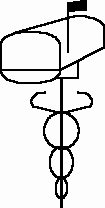
Medical Education in the Most Important Dimensions and Perspectives
About Site & Author
Robert C. Bowman, M.D.
World of Rural Medical Education Web site
over 3,000 files, over 1500
graphics, and most importantly a perspective focused on basic access to health
This web site is not affiliated with any institution of higher education or medical association.
More and better physicians that stay longer where they are most needed...
To Dan Marien, Jack Verby, Terry Burge, Chris Ramsey, and others who have supported, chastised, and inspired me. Heroes in Medicine
To those who endure and overcome to gain admission and serve where most needed!
Most frequent keyword - Getting into Medical School Advice About Getting Into Medical School,
Also Teaching Quotes Holiday Quotes
Author's Favorites
The Invisible Faculty by Joseph Hobbs, M.D. - by permission from STFM
Academic Medicine's Season of Accountability and Social Responsibility, Butler - by permission from AAMC
The World of Rural Medical Education
The World of Rural Medical Education
Searching This Site Via Google. Click This Link and Add Your Topic
Common Search Topics On the Site Admission Health Access Schools
Logistic Regression Most Needed Health Access Health Policy
Health Access Recovery Standard Primary Care Year Family Practice
Family Medicine Primary Care Rural Workforce Underserved Careers
MCAT Most Exclusive More Normal Admissions Probability
Physician Distribution By Concentration PDC
Principles of Health Access from Complete Populations
Includes studies of physicians and non-physicians
Health Access = Origins, Career Choices, Training
Health Access Dictated by Policy, Policy Policy
Facts Important in Basic Health Access
The most comprehensive approach to basic health access
Family Medicine Central: National Comparisons of Workforce
Infrastructure America Website
Dedicated to rebuilding Human Infrastructure in America - teachers, nurses, public servants, family physicians
Why Divisions of Web Sites? Divide to understand, unify, and process through to most needed health access. Better health care in cost, quality, and access parameters requires basic infrastructure recovery in America for the nation to have better students, better nurses, better teachers, and physicians that represent a wider range of the population. Without all of these areas addressed, physicians will continue to move toward the extremes of exclusive origin and will fail to comprehend patient care for most types of patients as well as a health care design for an entire nation. Better health care requires optimal birth to higher education admission opportunity for lower and middle income children and the populations left behind in education, economics, and health access. Better health care requires a specific infrastructure focus on basic health access, independent from other health care such that foolish whims of patients, political leaders, and medical leaders will not allow basic access to health to be compromosed. Basic access to health or emphasis regarding primary care will not fix the problems of the nation, but the steps required to address basic health access will fix the problems of the nation.
Our nation, by its policies in nurturing, child development, education, admissions, higher education, college, education funding, medical education, insurance, and health - is a market forces machine for concentrating physicians together and away from the populations in most need of health care, including the elderly.
About 50% of the physicians entering the United States have origins outside of the United States or have a parent who was born outside.
Serious problems exist in birth to admission in America, yet we hear nothing. Child developers, those involved in secondary education, those who test American children, and those who study higher education agree that there are serious problems, and still we hear nothing. Medical education experts claim that medical school debt impairs career choice. Actually birth to admission changes have prevented lower and middle income children, rural children, and children born in America from a reasonable birth to age 6, education with opportunity, and higher education with medical school only the final barrier.
Exclusive admission, exclusive training, and exclusive policy make health care access most difficult.
Medical schools focused on health access are capable of meeting the needs of over 90% of the population.
Top ranking schools are incapable of meeting the needs of the 65% of the population in most need of health care.
The answers are not primary care, family medicine, or more physicians. The answers are about a basic health, education, and development plan for the entire nation, not the 35% doing well.
Beyond the years of preparation, there is the delivery of health care. Americans appear to have a design for the physicians entering the workforce that fails in the most basic areas regarding delivery of health care.